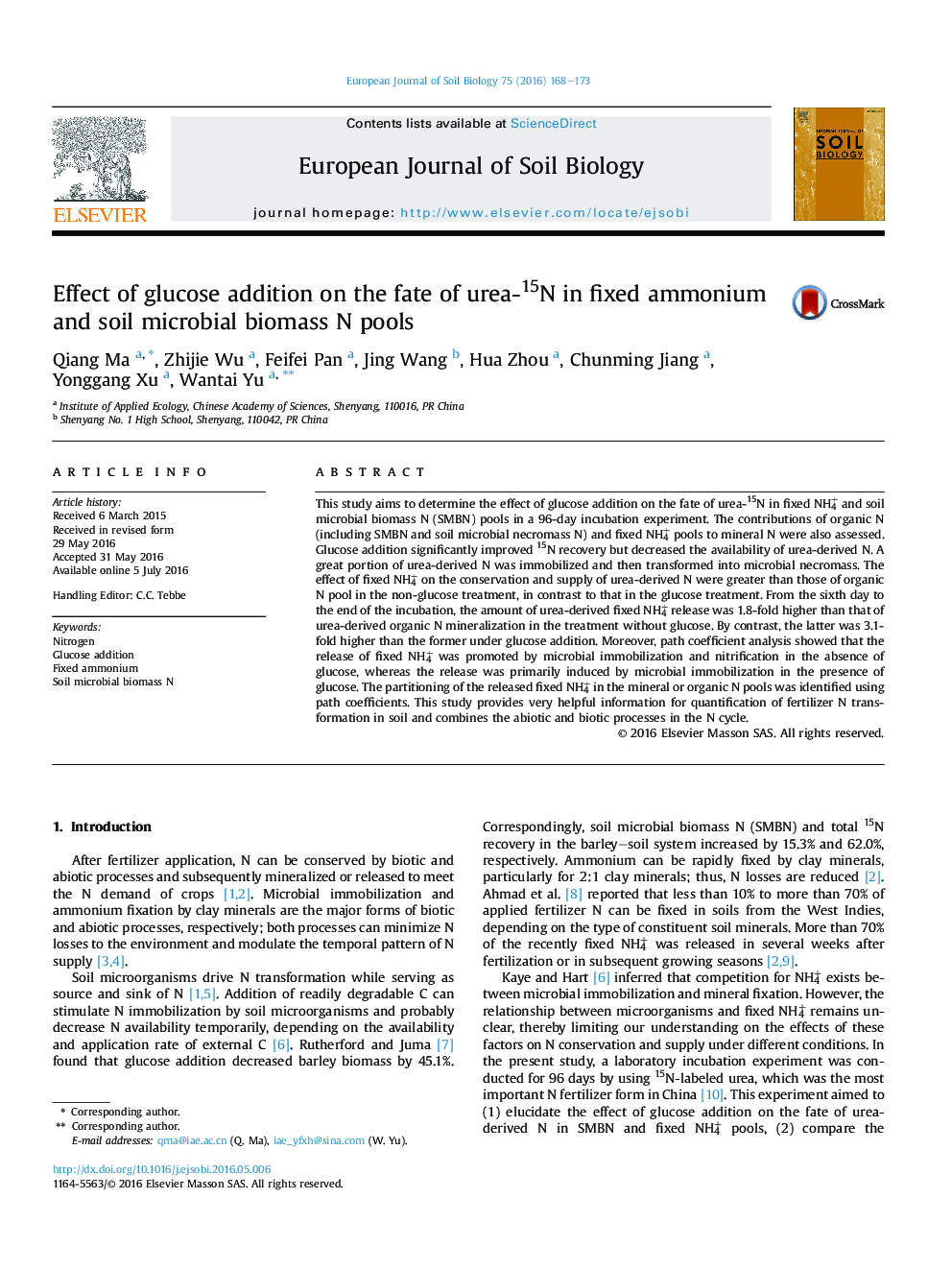| Article ID | Journal | Published Year | Pages | File Type |
|---|---|---|---|---|
| 4391650 | European Journal of Soil Biology | 2016 | 6 Pages |
•Contributions of fixed NH4+ and SMBN to mineral N were greater in the non-glucose and glucose treatments, respectively.•Soil microorganism was superior competitor for urea-derived N than soil clay mineral in the presence of glucose.•Glucose addition altered the driving force of fixed NH4+ release.
This study aims to determine the effect of glucose addition on the fate of urea-15N in fixed NH4+ and soil microbial biomass N (SMBN) pools in a 96-day incubation experiment. The contributions of organic N (including SMBN and soil microbial necromass N) and fixed NH4+ pools to mineral N were also assessed. Glucose addition significantly improved 15N recovery but decreased the availability of urea-derived N. A great portion of urea-derived N was immobilized and then transformed into microbial necromass. The effect of fixed NH4+ on the conservation and supply of urea-derived N were greater than those of organic N pool in the non-glucose treatment, in contrast to that in the glucose treatment. From the sixth day to the end of the incubation, the amount of urea-derived fixed NH4+ release was 1.8-fold higher than that of urea-derived organic N mineralization in the treatment without glucose. By contrast, the latter was 3.1-fold higher than the former under glucose addition. Moreover, path coefficient analysis showed that the release of fixed NH4+ was promoted by microbial immobilization and nitrification in the absence of glucose, whereas the release was primarily induced by microbial immobilization in the presence of glucose. The partitioning of the released fixed NH4+ in the mineral or organic N pools was identified using path coefficients. This study provides very helpful information for quantification of fertilizer N transformation in soil and combines the abiotic and biotic processes in the N cycle.
